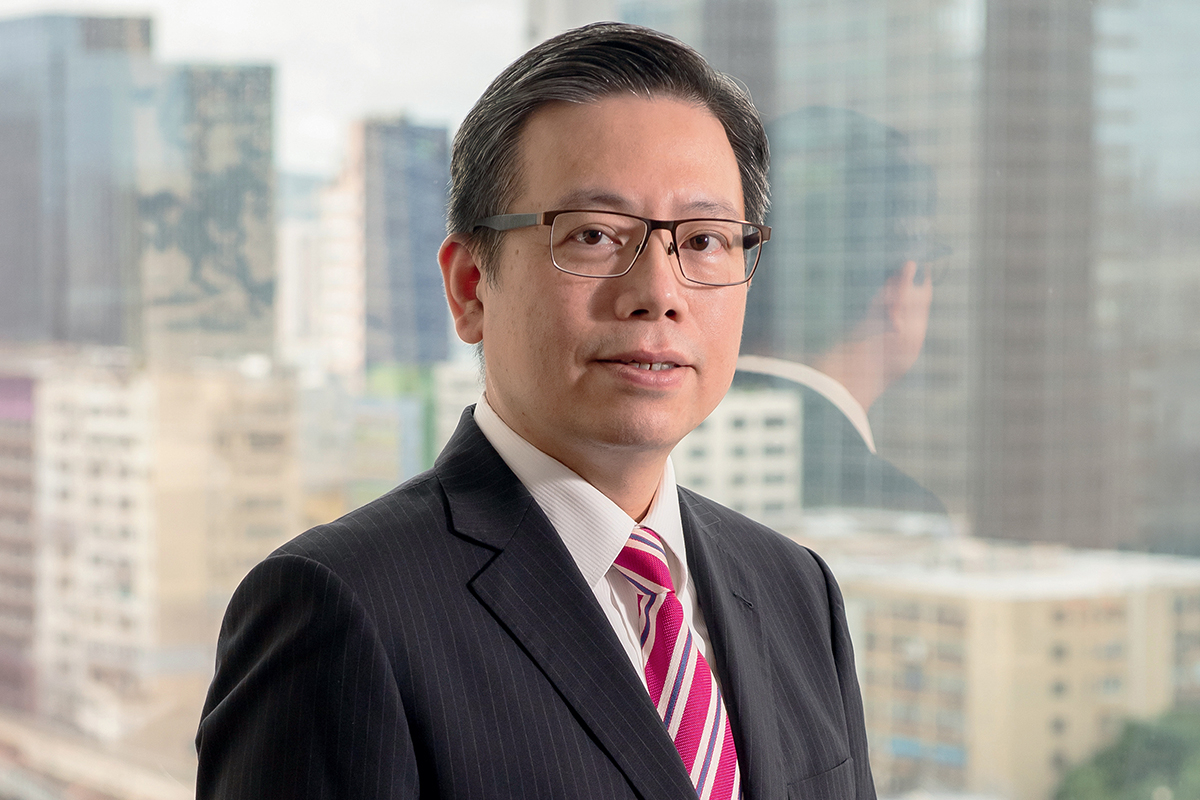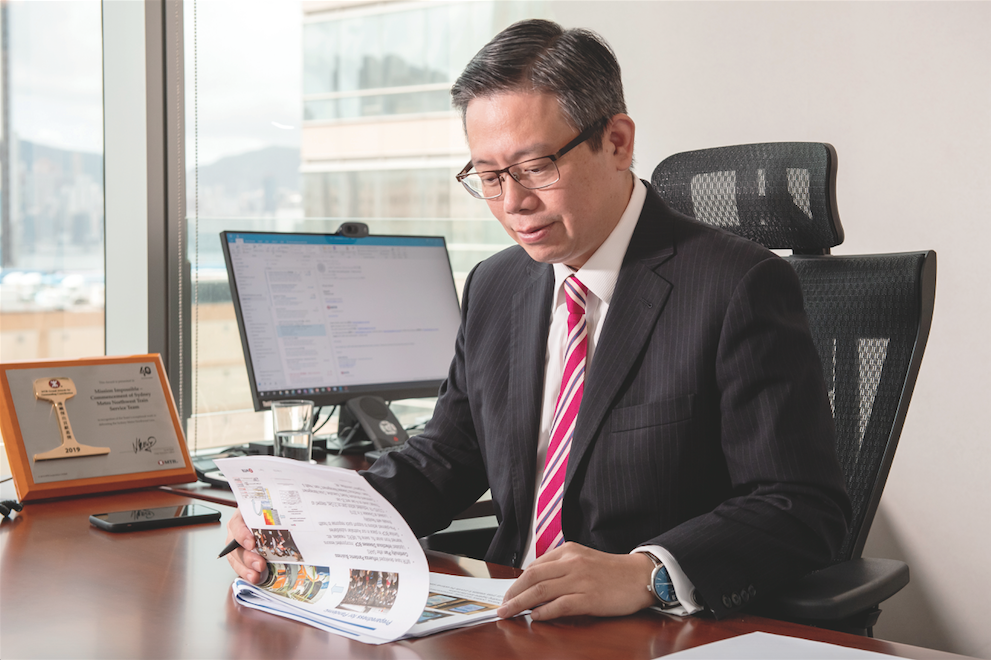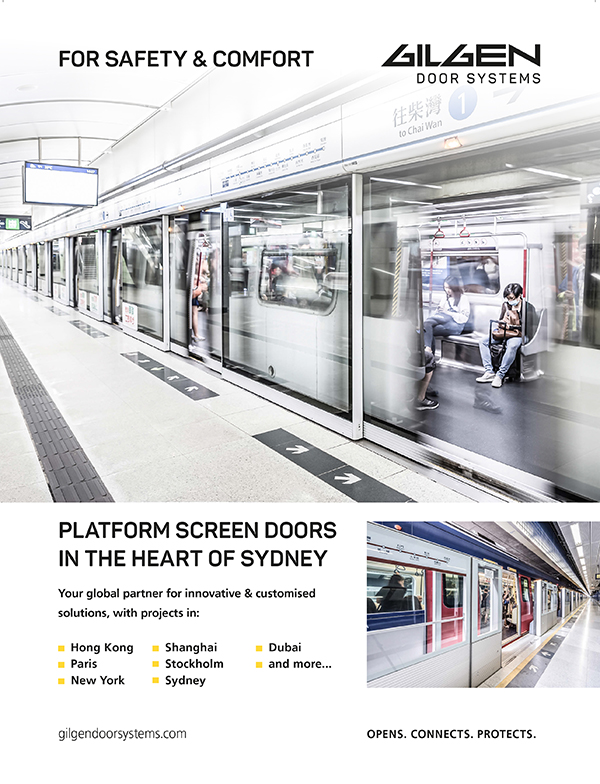Terry Wong was a little nervous when he hopped on Sydney’s first metro train pulling out of Chatswood last year. The CEO of Australian Business at MTR Corporation was on board Australia’s first fully automated train, completely driverless, linking the north-west via 13 stations in a 37-minute trip, nearly half of which went through Australia’s longest rail tunnel.

Timetables were obsolete; there was no need for them on Sydney’s new North West Line with the bold promise that trains would run on time, every four minutes during peak hour and every 10 in between.
This was real-time travel with live electronic route maps and even boarding was a new and faster experience with level access between platform and train. Just as audacious was the quiet expectation that the 4,000 car spaces provided en route would be filled by commuters.
Offering Australia’s first turn-up-and-go public transport system, Terry knew there was a lot more riding on this new A$8.3 billion rail line than just the dignitaries and media settled in around him for the inaugural trip from Chatswood to Rouse Hill.
Terry is responsible for managing and developing MTR’s business in Australia, predominantly Metro Trains Sydney and Metro Trains Melbourne. Both are MTR majority-owned companies responsible for the operations and maintenance of the North West Line and the Melbourne metropolitan rail network respectively.
Terry could only trust the delivery quality of MTR and its delivery partners, and the experience and expertise of his colleagues from both the Hong Kong and Sydney teams on testing and commissioning to detect and thwart every possible predictable failure during the very demanding process and timeline before the opening.
“My feelings were complicated – a mixture of relief and apprehension,” Terry remembers. “On one hand, I felt really happy and relieved because we’d worked through all the challenges to make sure the line opened successfully, safely and smoothly. But, on the other hand, I was nervous about how the system would be received by our passengers. It was the first service of its kind, and passengers would have to change their behaviour to enjoy this new, efficient transport.”
Terry need not have worried. Sydneysiders quickly embraced the service, with almost 20 million passengers using it during its first year and the fleet of 22 driverless trains travelling more than 3.8 million kilometres.
It’s an impressive figure considering the first anniversary fell on 26 May, smack in the middle of COVID-19 restrictions. Even more impressive is the 96% satisfaction rate gleaned from government surveys.
“Obviously passenger figures were down because of COVID-19, but it was still a big number for our first year, and I’m sure numbers will continue to rise, particularly since we have MTR’s world-class plan implemented to ensure our staff and passengers are kept safe from the coronavirus. That is a major priority.”
And the car parks? “I remember looking at the new car park at Tallawong, the final stop at Rouse Hill, before we launched,” Terry says. “It was a huge, empty space and I wondered if the 1,000 spots would ever be filled. But after just a few months of operation, if commuters weren’t parked before 7am, they missed out.”
Hong Kong’s MTR Corporation is a global leader in integrated urban planning and development, offering railway services in the UK, Australia, Sweden and China, with its benchmark subway operations in Hong Kong considered the best in the world.

Terry joined MTR to lead the corporate finance and development department in 2011 from his previous regional role in a major oil and gas company leading portfolio projects, mergers and acquisitions from Hong Kong and Singapore.
In 2016, he was promoted to lead the Australian arm and the international consultancy business of MTR. In Australia, MTR plays a significant role in leading the delivery of the country’s most advanced passenger rail services, the Sydney Metro North West Line and the Sydney Metro City and Southwest project, an extension of the North West Line connecting Chatswood to Bankstown.
Since 2009, it has also operated the 409-kilometre Melbourne metropolitan rail network under its 60%-owned subsidiary, Metro Trains Melbourne. Together, the two Sydney Metro projects are Australia’s biggest transport project, boasting a 66-kilometre standalone metro line and 31 stations.
In 2014, tunnelling began for the 36-kilometre Metro North West, which includes Australia’s longest twin rail tunnels – 15 kilometres. Four years later, tunnelling began for the City and Southwest project, extending the North West Line at Chatswood under Sydney Harbour through the CBD and continuing on to Bankstown.
MTR is playing a significant part in these two Sydney Metro projects, with equity investment in the Public Private Partnership project vehicles, project delivery, system integrations, operations and maintenance of the metro lines.
With Hong Kong’s MTR railway operations offering 99.9% on-time journey performance, Terry understood the pressure to uphold the high standards expected of MTR services around the world.
He is grateful to have a vast pool of global expertise upon which to draw, particularly when choosing his frontline delivery and operations staff and experts – a vital element for the satisfaction of the 13 million global passengers carried by MTR rail every day.
“We needed our frontline staff to be more diverse and customer driven. We have trained and grown with them for more than a year before the metro line opening to bring them up to a high standard enjoyed in other international cities where MTR operates. As for our project delivery and operational teams, because we have a good reputation for world-class standards, we attract good talents who want to join us in Australia and associate with MTR. MTR has a strong work spirit and customer-oriented culture; we help each other out, and teamwork is integral to that.”
Proudly supported by:



